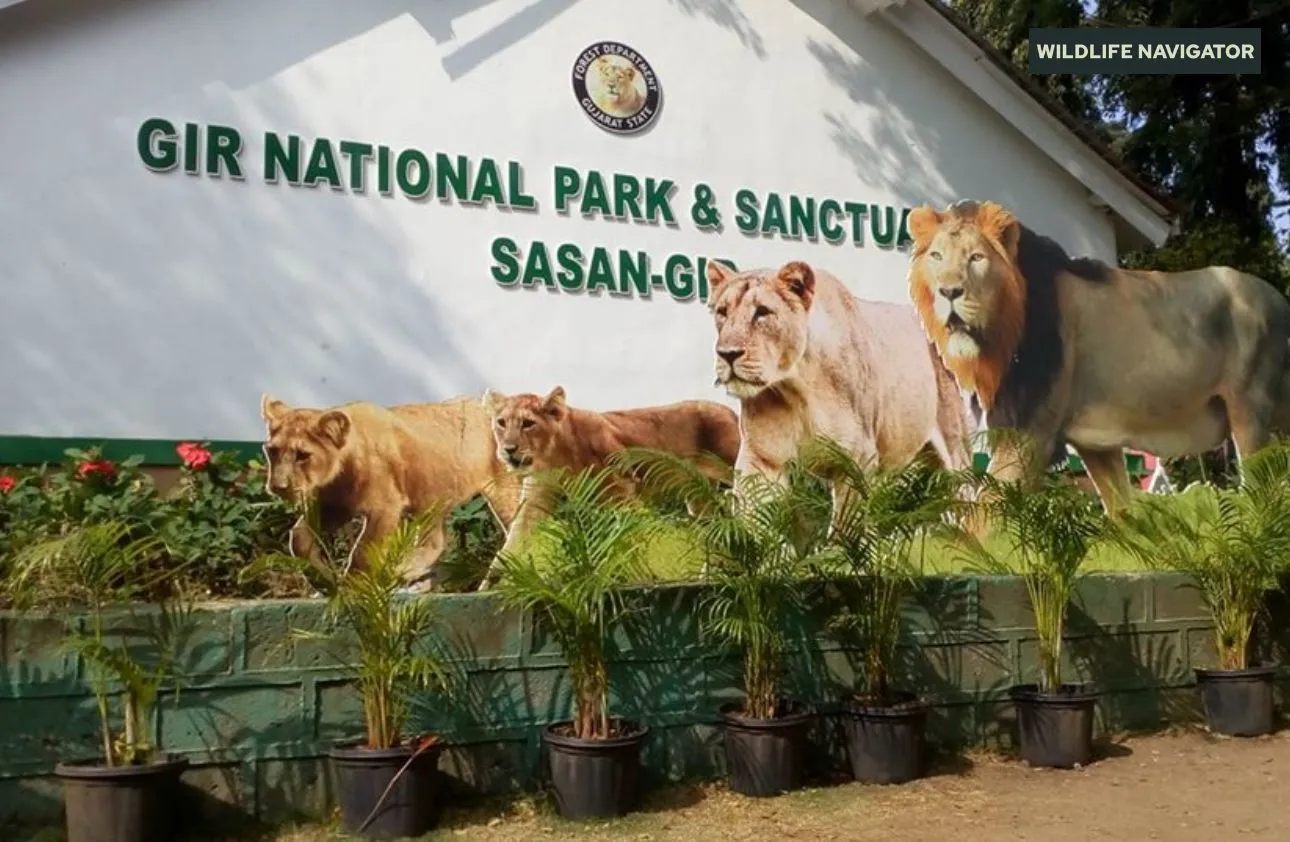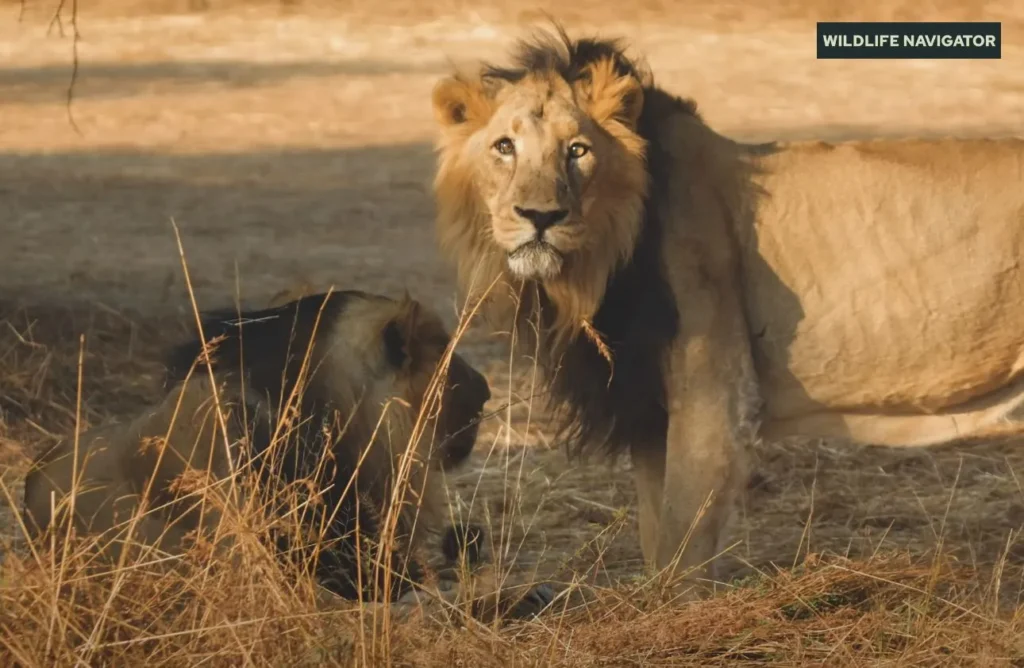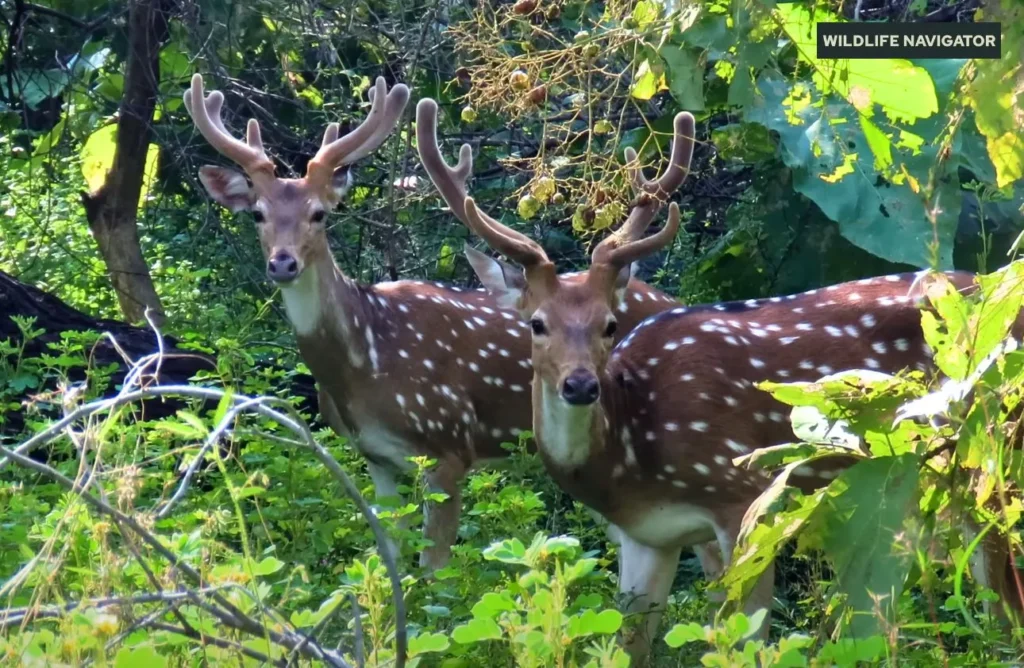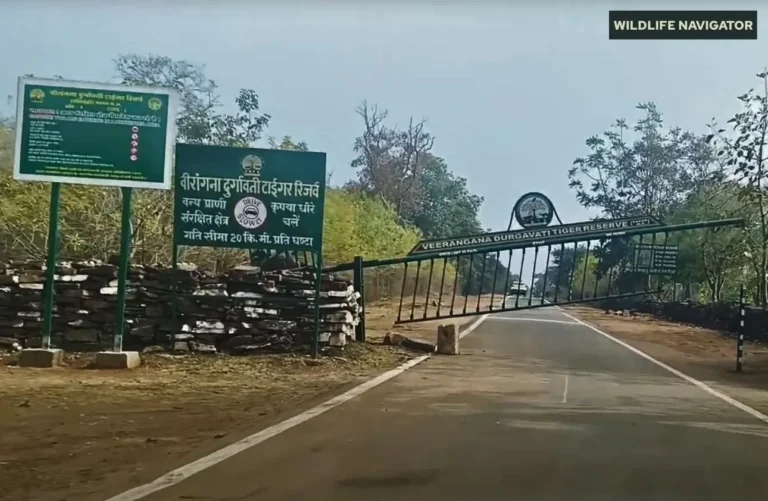Gir National Park: A Complete Travel Guide to the Land of Asiatic Lions

Gir National Park is one of India’s crown jewels of wildlife tourism. Spanning 1,412 square kilometres, this protected sanctuary is renowned as the last remaining natural habitat of the Asiatic Lion (Panthera leo persica).
Unlike Africa’s savannah lions, the Asiatic lion is slightly smaller, with a distinctive fold of skin along its belly, and Gir is the only place on earth where you can see these majestic cats roaming free in the wild.
Beyond the lions, Gir is a vibrant ecosystem comprising dry deciduous forests, acacia woodlands, grassy scrublands, and riverside habitats, which support an astonishing variety of wildlife. More than 300 bird species, stealthy leopards, hyenas, and marsh crocodiles make the park a paradise for both wildlife enthusiasts and photographers.
For travellers, Gir is not just a safari destination but a journey into India’s conservation success story — where lions once faced extinction, but today thrive in healthy numbers thanks to decades of protection.
History, Geography & Landscape
The story of Gir National Park is deeply tied to India’s royal hunting past. Once the exclusive hunting grounds of the Nawabs of Junagadh, Gir’s lions were nearly driven to extinction in the 19th century due to uncontrolled hunting and habitat loss. Concerned by their dwindling numbers, the Nawab initiated early conservation measures in the early 1900s. This legacy was carried forward, and Gir was officially declared a sanctuary in 1965 and later upgraded to national park status in 1975.
Geographically, the park sits in the Kathiawar Peninsula of Gujarat, stretching from Junagadh to Amreli districts. Its terrain is a mix of undulating hills, plateaus, and river valleys, making it scenic as well as ecologically diverse. Rivers such as Hiran, Shetrunji, and Datardi flow through the park, creating vital water sources for its wildlife.
The climate here is typically semi-arid:
- Summers (March–June) are scorching, with temperatures touching 45°C.
- Monsoons (July–September) bring lush greenery but also heavy rains, during which the park remains closed.
- Winters (October–February) are mild and pleasant, perfect for safaris and birdwatching.
This varied geography and climate have shaped Gir into one of the most unique forest landscapes in India — a rare mix of rugged wilderness and thriving wildlife.
Flora and Fauna of Gir National Park
When it comes to biodiversity, Gir is a living museum of India’s natural heritage.
Flora: The forest is dominated by dry deciduous teak trees, interspersed with acacia, flame-of-the-forest, banyan, jamun, and dhak trees. In the open areas, you’ll find scrublands and vast grass patches that provide grazing grounds for herbivores. The riversides are dotted with lush greenery, making them hotspots for birdwatchers.
Fauna – The Star Attraction:

- The Asiatic Lion is Gir’s undisputed king. Once on the brink of extinction with only about 180 individuals in 1974, the population has now rebounded to 600+ lions — a conservation miracle.
- Visitors are almost guaranteed a lion sighting during jeep safaris, especially in the early morning or late evening hours.
Other Mammals:

- Herbivores such as chital (spotted deer), sambar, nilgai, and chinkara roam freely, while troops of langurs swing between trees.
- Leopards are the second-biggest attraction here, often seen prowling the edges of the forest.
- Carnivores like striped hyenas, jackals, and jungle cats add to the excitement.
Birds:
Gir is also a paradise for birdwatchers, with over 300 recorded species. Keep your eyes open for the crested serpent eagle, pygmy woodpecker, painted stork, paradise flycatcher, and flamingos during the winter season.
Reptiles:
The park’s rivers and reservoirs are home to mugger crocodiles, snakes, and monitor lizards. The Kamleshwar Dam within the park is one of the best spots to see basking crocodiles.
In short, Gir offers a complete wildlife experience — where the call of lions echoes across the forest, birds add melody to the silence, and every safari feels like stepping into a natural kingdom.
Safari Experience & Park Zones
A trip to Gir is incomplete without embarking on a thrilling jungle safari. Unlike many other national parks in India, Gir offers exclusive jeep safaris, which makes the experience more personalised and immersive.
Types of Safaris:
- Gir Jungle Trail: The main safari through the core forest area, where you can spot lions, leopards, deer, and a wide variety of birds.
- Devalia Safari Park (Gir Interpretation Zone): A fenced area that offers a shorter, quicker version of the Gir experience. It’s great for families who have limited time and want guaranteed lion sightings.
- Girnar Sanctuary Safari: Located near Junagadh, this is an extension of the Gir ecosystem with stunning landscapes, hills, and ancient temples.
Safari Timings:
- Morning Safari: 6:00 AM – 9:00 AM
- Midday Safari: 9:00 AM – 12:00 PM
- Evening Safari: 3:00 PM – 6:00 PM
(Slots vary slightly depending on the season.)
Entry Gates:
- Sinh Sadan, Sasan Gir – The main starting point for safaris.
- Devalia Park has its own separate gate and ticketing system.
Highlights of Zones:
- Jungle Trail → Best for an authentic wilderness experience.
- Devalia → Easy lion sightings in a shorter span.
- Girnar → Blend of wildlife and cultural exploration.
Safari bookings are made online through the official Gir Forest Department portal, and it’s highly recommended to reserve well in advance, especially during peak season (Dec–Feb).
Best Time to Visit Gir National Park
Gir’s landscape transforms dramatically with the seasons, and each season brings its own charm.
Summer (March–June)
- The forest dries up, making waterholes the best spots to sight lions and leopards.
- Temperatures soar above 40°C, so safaris can be hot and tiring.
- Best for serious wildlife photographers looking for clear sightings.
Monsoon (July–September)
- The park remains closed for visitors to allow the animals a safe breeding season.
- Heavy rains rejuvenate the landscape, turning the forest into a lush green paradise.
- Not open for tourism, but great for bird migration in the surrounding areas.
Winter (October–February)
- The most tourist-friendly season with cool, pleasant weather (10°C–25°C).
- Perfect for families and casual travellers.
- High chances of spotting lions basking in the winter sun.
- Bonus: This is also the season for migratory birds, making it a double delight for birdwatchers.
Verdict: The best time to visit Gir National Park is from December to March, when the weather is pleasant, safaris are comfortable, and lion sightings are frequent.
How to Reach & Getting Around
Getting to Gir is convenient, as it is well-connected by air, rail, and road.
By Air
- Rajkot Airport (160 km) – The nearest major airport with regular domestic flights.
- Diu Airport (110 km) – A smaller airport but closer, often preferred by tourists combining a Gir & Diu beach trip.
- Ahmedabad Airport (365 km) – An international hub with better connectivity for foreign travellers.
By Train
- Junagadh Railway Station (80 km) and Veraval Railway Station (65 km) are the closest. Both are well-connected to Ahmedabad, Rajkot, and other major cities.
By Road
- State-run buses and private taxis connect Gir with Junagadh, Rajkot, Somnath, Diu, and Ahmedabad.
- Self-driving is also popular, as the highways are well-maintained.
Getting Around Inside the Park
- Entry and safari are strictly regulated by the Forest Department.
- Visitors are not allowed to take their private vehicles into the jungle.
- Safaris are conducted in park-approved jeeps with trained drivers and registered naturalist guides who provide insights into the flora, fauna, and lion behaviour.
Accommodation & Stay Options
A safari in Gir is best enjoyed when paired with a stay close to the wilderness. Luckily, the region around Sasan Gir offers a wide range of accommodations — from budget-friendly lodges to luxury jungle resorts.
Government Forest Lodges
- Sinh Sadan Guest House (run by the Forest Department) is the most authentic stay option, located right near the park entrance. It’s simple yet convenient, especially if you want priority access to safari bookings.
Budget-Friendly Options
- Several small hotels and homestays in Sasan Gir village offer clean rooms at affordable prices. These are perfect for backpackers and budget travellers. Popular names include Gir Jungle Lodge and Amidhara Resort.
Eco-Camps & Tented Stays
- For nature lovers, eco-camps provide a rustic yet comfortable experience. Imagine staying in luxury tents surrounded by forests, listening to the calls of birds at dawn. Places like Gir Birding Lodge are ideal for this.
Luxury Resorts
- If you want a mix of comfort and wilderness, there are some top-end properties near Gir.
- The Fern Gir Forest Resort – Known for its eco-friendly design and modern amenities.
- Woods at Sasan – A boutique luxury stay with wellness programs and yoga retreats.
- Taj Gateway Hotel Gir – For those who prefer a touch of royal luxury along with their safari experience.
Pro Tip: Always book your accommodation in advance, especially during peak tourist months (December–February), as safari lodges fill up quickly.
Travel Tips & Visitor Guidelines
Visiting Gir is an incredible experience, but it comes with responsibilities. To ensure safety and respect for the ecosystem, here are some essential travel tips:
What to Pack
- Light cotton clothes for summers; warm jackets for chilly winter mornings.
- Neutral-colored clothing (avoid bright reds or neon shades).
- A good pair of binoculars, camera, sunscreen, hat, and insect repellent.
Photography Tips
- Use long zoom lenses instead of getting close to animals.
- Avoid using flash as it can disturb wildlife.
- Be patient — sometimes the best shots come from waiting quietly.
Safari Guidelines
- Maintain silence inside the forest. Loud noises scare animals away.
- Do not litter; carry back all plastic waste.
- Stay inside the vehicle at all times — remember, you’re in the lions’ territory.
- Always carry your safari permit and ID proof.
Respect Local Communities
The Maldhari tribe, pastoralists who live in and around Gir, have coexisted with lions for centuries. Respect their lifestyle and traditions if you interact with them during your stay.
Nearby Attractions & Suggested Itineraries
A trip to Gir can easily be combined with cultural, religious, and beachside explorations. Here are some must-visit nearby attractions:
Somnath Temple (50 km)
One of the 12 Jyotirlingas of Lord Shiva, Somnath Temple is a spiritual destination located on the Arabian Sea coast. Many travellers combine their safari with a pilgrimage here.
Girnar Hills (Junagadh, 80 km)
A sacred site with ancient Jain temples and a challenging trek up Girnar Hill. It’s perfect for adventure seekers and pilgrims alike.
Diu Island (110 km)
Famous for its Portuguese heritage, pristine beaches, and forts. After a dusty safari in Gir, Diu’s calm sea breeze is a refreshing change.
Jamjir Waterfalls (70 km)
A hidden natural gem near Kodinar, best visited post-monsoon. Great for photography and picnics.Suggested Itineraries
- 2-Day Itinerary:
- Day 1: Morning safari in Gir + Evening safari.
- Day 2: Visit Somnath Temple → Return or continue journey.
- 3-Day Itinerary:
- Day 1: Morning safari + Explore Sasan Gir village.
- Day 2: Morning safari + Afternoon trip to Somnath Temple.
- Day 3: Drive to Diu for a relaxed beach day before heading back.
This mix of wildlife, spirituality, and culture makes Gir one of the most well-rounded travel experiences in western India.
Conservation & Importance of Gir National Park
Gir is not just a tourist attraction — it is one of the greatest conservation success stories in India. The park plays a pivotal role in global biodiversity preservation because it is the only natural habitat of the Asiatic Lion.
Saving the Asiatic Lion
- In the late 19th century, uncontrolled hunting had reduced the Asiatic lion population to fewer than 20 individuals.
- Thanks to strict protection measures by the Nawab of Junagadh and later by the Indian government, the lion population has bounced back.
- Today, Gir is home to over 600 lions, making it a remarkable example of successful wildlife conservation.
Global Significance
- Gir is the only place on Earth where Asiatic lions exist in the wild.
- The park is part of India’s network of protected areas, contributing to global biodiversity targets and eco-tourism models.
Challenges
- Human-lion conflict: As lion numbers grow, they sometimes stray into nearby villages, creating risks for livestock and people.
- Habitat pressure: Expanding agriculture and tourism can disturb the ecological balance.
- Genetic diversity: Since all Asiatic lions live in one region, disease outbreaks pose a potential threat.
Conservation Efforts
- The Gir Lion Conservation Project ensures regular monitoring of lion health and movements.
- The Maldhari community, which coexists with lions, plays a key role in eco-balance. Their traditional grazing practices are regulated but respected.
- Awareness campaigns and responsible tourism encourage visitors to become conservation partners.
How Travellers Can Help
- Choose eco-friendly accommodations.
- Respect safari rules and avoid disturbing animals.
- Support local communities by buying handicrafts or hiring local guides.
- Spread awareness about the importance of protecting Gir’s ecosystem.
Gir is not just a destination — it is a living heritage of conservation, proving that humans and wildlife can coexist when efforts are made to protect nature.





